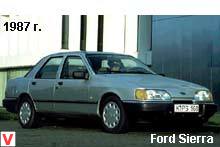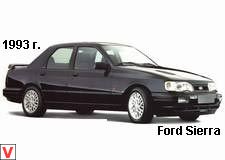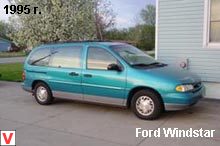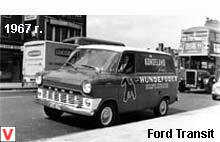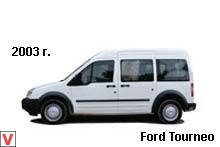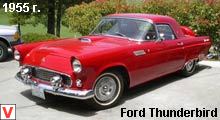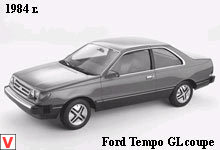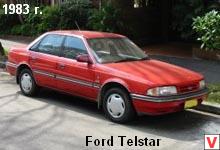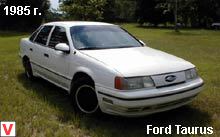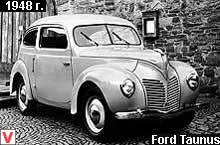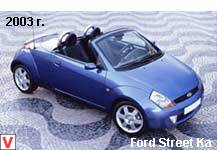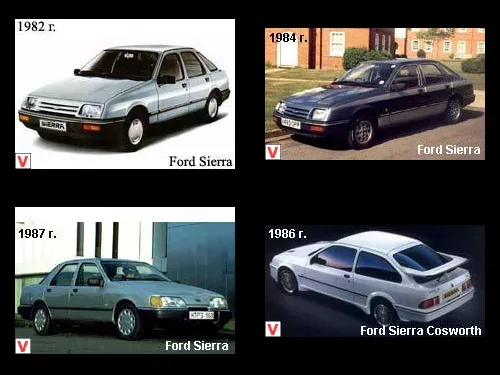
A car named Sierra appeared in 1982. Development on its creation began back in 1979, and $ 1.2 billion was spent on the project. The novelty was built on the basis of the Probe III concept car and inherited from it a revolutionary new body shape and a very low coefficient of aerodynamic drag for Cx = 0.34 for that time. Sierra was produced in the form of a three-and five-door hatchback, plus a wagon. In 1984, the range of bodywork filled up two-door sedan. Initially, three versions of the trim and equipment of the car (L, GL, and also Ghia) were proposed. The Ghia version had better equipment and was different in appearance.
In addition to the standard set, such rare things as fuel computer and heated front seats were offered as options for this configuration. At the end of 1984, the car was modernized, but it did not affect the appearance. In the mid-80s, they began to install ABS on all Sierra models.
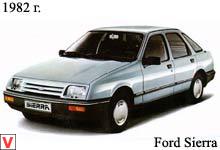
The Sierra suspension has become completely independent, such as McPherson in the front and on the diagonal levers in the back. The Sierra of the first generation installed gasoline carburetor and injection engines with a volume of 1.3 to 2.3 liters (60 to 115 hp), as well as a 2.3 liter diesel engine (67 hp). The sports version of the Sierra XR4i, which was also offered in the all-wheel drive version of the Sierra XR 4x4, was fitted with a powerful 2.8 liter gasoline engine (143 and 150 hp). Outside Europe, the Sierra XR6 was sold with a 3.0-liter 6-cylinder engine.
Transmission could be both 4-and 5-speed manual, and 3-speed (from 1984 - 4-speed) automatic. In July 1986, a powerful modification of the Sierra RS Cosworth was released. The name Cosworth indicated that the engine was developed by the British company Cosworth Engineering. Various engines of 2.0 liter capacity from 204 to 220 hp were installed on this car. This modification was so popular that many European tuning houses engaged in the development of the engine, which brought the engine to 500 hp. Externally, the Sierra RS Cosworth was distinguished by large wheels, wide bumpers and a characteristic air intake grille on the hood.
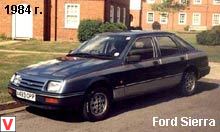
In 1987, as a result of serious modernization and restyling, the second generation Sierra appeared. External changes touched the front of the car - the new headlight unit was installed, the windshield area was increased, the grille was updated. In addition to the three-and five-door hatchback produced five-door wagon Sierra II Turnier, as well as the four-door sedan. On the basis of the Sierra second generation produced and pickup. The Sierra II installed gasoline 4-and 6-cylinder engines with a volume of 1.6 to 2.9 liters (75 to 150 hp), as well as diesel engines of 1.8 liters and 2.3 liters (respectively 75 and 67 hp).
The car was equipped with mechanical and automatic transmission. The most powerful engines were installed on the charged version of the Sierra II XR4, which was also produced in the all-wheel drive version of the Sierra II XR 4x4. In January 1988, the Sierra II GT was released in limited edition with a sunroof, tinted windows, body-colored mirrors and side reinforcements descending to the lower edge of the doors. In September 1989, the Laser equipment line appeared with additional high-beam headlamps, tinted glass, black framed side windows and a tachometer on the instrument panel.
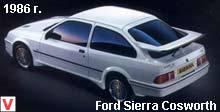
In the winter of 1990, another restyling was carried out. Now in the external appearance of the car it was possible to observe horizontal cuts in the grille, moldings, white turn indicators and darkened rear lights with a black connecting strip. Another torpedo and floor console appeared in the cabin, the steering column became adjustable in height and length, other door locks and internal handles. In 1991, the latest design changes were made to the Sierra. Bumper began to paint in the body color, for all modifications began to install power steering and power windows front side windows.
Other images auto Ford Sierra
